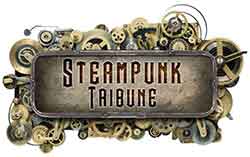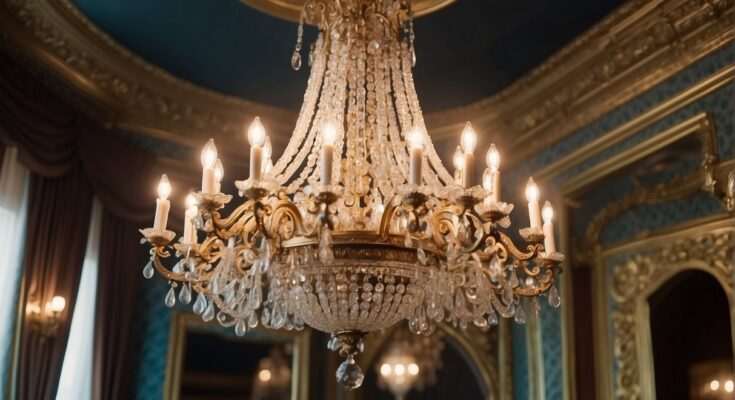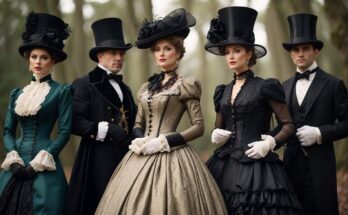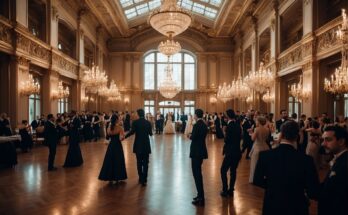Victorian era home decor is characterized by its ornate detail, rich color palette, and an eclectic mixture of historical styles. This aesthetic emerged during the reign of Queen Victoria, between 1837 and 1901, marking it a period of industrial revolution and global expansion for Britain. As such, the design sensibilities of the time exhibit a combination of both the traditional and the exotic, mirroring the era’s societal changes. Victorian homes are often distinguished by their decorative excess, embracing clutter over minimalism, with rooms filled with furniture, textiles, and knick-knacks.

The interior decor of a Victorian-style home is typically lavish, featuring heavy fabrics like velvet and brocade, wallpaper with intricate patterns, and an abundant use of woodwork. Dark, rich tones alongside elaborate patterns were favored, contributing to a sense of depth and luxury. The era’s design philosophy was largely influenced by historicism, incorporating gothic, rococo, and neoclassical motifs into the architecture and interior design. This layered approach to decoration reflected the Victorians’ taste for complexity and craftsmanship.
Furnishings in a Victorian home often served as a status symbol for the burgeoning middle class; thus, furniture items were usually substantial and elaborately adorned. Carved elements, such as ornate bookcases, sideboards, and chairs, were common, crafted with attention to detail and designed to convey a sense of opulence and comfort. Additionally, a Victorian home would commonly feature accessories such as ornamental mirrors, paintings, and collections of ceramics or books, further enhancing the sense of abundance that was so integral to Victorian era home decor.
Historical Context of Victorian Home Decor
Victorian home decor is deeply rooted in the era’s societal changes, marked by the Industrial Revolution and the influence of Queen Victoria’s tastes. Not only did technological advancements and mass production alter the public’s access to home furnishings, but the period was also characterized by significant architectural developments that informed interior design.
Influence of the Industrial Revolution
The Industrial Revolution brought about dramatic shifts in the production and distribution of goods. Mass production techniques enabled the manufacture of furniture and decorative items on a scale previously unattainable, leading to wider availability and variety. These changes stimulated trade and created a burgeoning middle class that sought to emulate the aristocracy’s style within their homes. As a result, there was a surge in the demand for home decor products, which were now more affordable and accessible.
- Textiles: Advances in textile production led to a wider range of fabrics being available for curtains, upholstery, and other home furnishings.
- Wallpapers: With new printing methods, wallpapers featuring intricate patterns became popular for Victorian interiors.
Queen Victoria’s Impact on Aesthetics
Queen Victoria’s reign had a profound impact on the era’s aesthetics, influencing everything from fashion to home decor. The Queen’s preference for opulence and grandeur was emulated in homes across Britain, often translating to interiors that were heavily ornamented and richly furnished.
- Cultural Influences: Queen Victoria’s interest in the arts, including literature and theater, helped fuel a national appreciation for historical and cultural motifs in home decor.
- Personal Tastes: The Queen’s personal tastes encouraged a mixture of styles, including Gothic revival, which was reflected in Victorian homes.
Architectural Developments
Victorian architecture was marked by eclecticism and a revival of different historical styles, which were often blended together in a single building. These developments in architectural style directly influenced interior design choices.
- Innovation in Construction: New building technologies and materials, such as iron and glass, allowed for more elaborate and ornate structures.
- Gothic Revival: This architectural style became prevalent during the period, characterized by pointed arches, steep gables, and detailed ornamentation, which also found its way into home decor elements.
Elements of Victorian Interior Design

Victorian interior design is characterized by its lavishness and attention to detail, embodying a distinctive richness and elegance. This resulted in spaces that felt both ornate and inviting, with each element playing a crucial role in creating the overall aesthetic.
Wallpapers and Wall Coverings
During the Victorian era, wallpapers were essential for injecting color and pattern into a room. Designers often used wallpapers with floral and damask patterns, which were popular for their complexity and visual appeal. Walls could also feature fabric coverings or wood panelings, enhancing the room’s texture and depth. Paint was another option, favored for its ability to provide rich colors that complemented the overall palette of the interior.
Rich Color Palettes
Color schemes in Victorian homes were bold and varied, consisting of rich colors like deep reds, greens, blues, and purples. These hues were considered a sign of opulence and were often used in a manner that demonstrated a keen eye for color coordination. Ceilings and moldings, too, were not left untouched and were often painted to match or accent the wall colors.
Ornamentation and Detailing
Detailing was a cornerstone of Victorian design. Ornate furniture with intricate carvings was prevalent, and surfaces frequently featured embellishments like tufted upholstery and gilded accents. Moldings and plasterwork added texture to walls and ceilings, and lace curtains or heavy drapes with luxurious fabrics enhanced the grandeur. Chandeliers and decorative brass fittings served as both focal points and sources of light, contributing to the overall sense of luxury.
Victorian Furniture Styles
Furniture in the Victorian era was constructed from dark, dense woods such as mahogany and oak. Pieces often had ornate carvings and rich detailing, with tufted chairs and sofas being commonplace. The furniture was not only grand in appearance but also functional, often featuring velvet or leather upholstery and designed to provide comfort. Items like intricate cabinets and davenport desks were typical, symbolizing the fine craftsmanship of the time.
Textiles and Fabrics in Victorian Homes

Victorian home decor is characterized by its elaborate attention to detail and use of rich textiles. Heavy fabrics and intricate patterns were hallmarks of the era.
Drapery and Window Treatments
In the Victorian era, windows were often adorned with multiple layers of drapery, serving both functional and aesthetic purposes. Velvet and damask were popular materials for curtains, which typically featured deep colors like burgundy and navy blue. Complementing the heavy drapes were lighter lace or muslin curtains that provided privacy while allowing natural light to diffuse softly into the room.
- Heavy drapery: Used to block drafts and insulate interiors.
- Lighter curtains: Lace or muslin, for privacy and light.
Rugs and Carpets
Flooring in Victorian homes often showcased lavish rugs and carpets, essential elements that added comfort and opulence. Persian and Oriental rugs were in high demand, appreciated for their intricate designs and durability. Wall-to-wall carpets, another favorite, often had floral or geometric patterns.
| Carpet Characteristics | Description |
|---|---|
| Material | Usually wool, noted for its durability |
| Patterns | Floral, geometric, or Oriental designs |
| Colors | Deep reds, greens, blues, and earth tones |
Accentuating Victorian Home Decor
Victorian home decor is distinguished by its ornate details, rich colors, and varied textures. These elements work together to create an atmosphere of opulence and sophistication.
Use of Accessories and Art
Victorian decor thrives on the use of accessories and art to add depth and character to the living spaces. Key to this style is the use of patterned wallpaper to create a backdrop that is both striking and representative of the period’s love for intricate designs. Adding vases and paintings can enhance this effect, with florals and jewel tones being particularly popular choices that remain true to the Victorian aesthetic.
- Wall Coverings: Patterned with florals and damask prints contribute to the quintessential Victorian look.
- Artwork: Selections typically feature pastoral or classical scenes within exuberant, gilded frames.
- Stained Glass: Incorporating stained glass windows adds color and plays with light in a way that is both traditional and dramatic.
- Gallery Wall: Creating a gallery wall with a mix of personal artwork, prints, and mirrors can reflect individual style while maintaining Victorian eclecticism.
Incorporating Modern Elements
Blending modern elements with Victorian decor allows for functionality and personalization in a home. For instance, a modern Victorian bathroom can feature classic subway tiles juxtaposed with a vintage claw-foot tub for an updated yet timeless look. Modern furnishings in jewel tones can complement the historic appeal of original features like crown moldings or fireplaces, providing contemporary comfort without upstaging the home’s intrinsic charm.
- Contrast: A balance of old and new is achieved by contrasting Victorian patterns and motifs with sleek, modern lines.
- Modern Victorian Decor: It highlights original architectural features while introducing modern lighting and furnishings.
- Personal Style: Integrating current trends with traditional elements showcases a resident’s personality in a cohesive Victorian scheme.
Room-Specific Victorian Decor Details
Victorian homes were synonymous with intricate details and lavish designs, each room distinct in function and aesthetic, incorporating elements of luxury and opulence with an emphasis on high-quality materials and craftsmanship.
Living Room Elegance
The Victorian living room served as a showcase of affluence and aesthetic appeal. Chandeliers were common focal points, often made of crystal or brass. Walls were typically adorned with wainscoting and wallpaper featuring floral patterns. Woodwork was essential, with dark, rich hues and intricate carvings enhancing the luxurious feel. Comfort was provided with upholstered furniture in sumptuous textures and velvet fabrics, while stained glass windows added color and an artistic touch. The fireplace stood as a central feature, often made of marble or surrounded by ornate woodwork.
- Focal Points: Chandeliers, Fireplace
- Walls: Floral Wallpaper, Wainscoting
- Textiles: Velvet with Rich Textures
- Windows: Stained Glass
Bedroom Opulence
Bedrooms during the Victorian era were private retreats characterized by luxury and comfort. Beds were large, often with heavy canopies and drapery in floral patterns and luxurious textures. Marble-topped tables and dressers added to the opulent atmosphere while intricately designed woodwork provided a touch of elegance. The flooring would frequently feature parquet designs, contributing to the room’s elaborate decor. Here, the demand for luxury was met with the inclusion of small, ornate chandeliers or oil lamps, and fireplaces were common for both warmth and as design elements.
- Furniture: Marble-topped Dressers, Canopy Beds
- Fabrics: Luxurious Textures, Floral Patterns
- Lighting: Ornate Chandeliers, Oil Lamps
- Flooring: Parquet
Victorian Dining Experience
The dining room in a Victorian home was more than a place to eat; it was a stage for demonstrating the homeowner’s status and taste. A large, ornate woodwork table served as the centerpiece, surrounded by heavily carved chairs. Floor-to-ceiling draperies often accented with floral patterns framed the stained glass windows, echoing the room’s richness. Wainscoting was prevalent, often topped with textured wallpapers. Overhead, a chandelier provided light and added grandeur, while a fireplace with marble mantlepiece was a testament to luxury. Parquet flooring was a mark of craftsmanship and elegance underfoot.
- Centerpiece: Ornate Wood Table
- Window Treatments: Draperies with Floral Patterns, Stained Glass Windows
- Walls: Textured Wallpaper, Wainscoting
- Lighting and Warmth: Chandeliers, Marble Fireplace
- Flooring: Parquet
Emerging Trends in Victorian Home Decor
Modern Victorian decor is seeing a renaissance in current design trends. This revival blends traditional Victorian aesthetics with contemporary sensibilities, creating a unique juxtaposition of old and new. Designers are crafting spaces that honor the era’s intricate designs, while injecting a sense of personal style and innovation.
Innovation in materials and design techniques has provided an opportunity for decorators to incorporate Victorian elements in a variety of settings. A common trend is the use of wallpaper patterns reminiscent of the Victorian period, utilizing modern, durable materials that stand up to today’s wear and tear.
Craft is at the forefront, with artisanal and bespoke pieces becoming increasingly popular. Items such as handmade lace curtains or custom-carved wooden furniture pieces add authentic charm to any room.
| Trend | Description |
|---|---|
| Color Pallets | Muted, yet rich color schemes with bold accents. |
| Fabrics | Luxurious textiles like velvet and silk. |
| Ornamentation | Detailed trims and moldings. |
| Furniture | Overstuffed and ornate, yet with modern comfort. |
Designers are also incorporating personal style by mixing vintage pieces with contemporary art and decor, allowing for spaces that reflect individual tastes while respecting Victorian roots.
This movement towards a modern Victorian aesthetic allows for the celebration of history’s design opulence while making spaces functional and comfortable for today’s lifestyles. The ability to mix periods and styles reflects the eclectic tastes of the current era.




